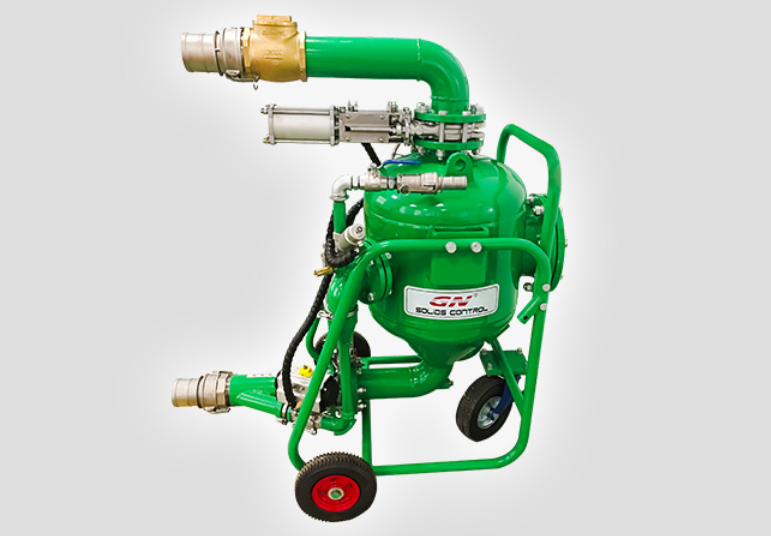
- Details
-
Published: 30 September 2025
In many industries such as mining, wastewater treatment, tunneling, oil & gas, and food processing, the transfer of solids is an important part of operations. GN Separation’s Solids Vacuum Pump (also called a sludge vacuum pump) provides a practical solution for moving powders, slurries, sludge, and other challenging materials.

What Is a Solids Vacuum Pump?
A solids vacuum pump uses compressed air to create negative pressure for suction and positive pressure for discharge. Since it is powered entirely by compressed air, there is no need for an electrical motor, which allows safe use in environments where explosion-proof equipment is required.
Main Features and Specifications
GN offers three models of Solids Vacuum Pumps—GNSP-10B, GNSP-20B, and GNSP-40B—and can also provide grouped or skid-mounted systems for larger capacities.
| Parameter | Range / Value |
|---|---|
| Max Capacity | 10, 20, or 40 m³/h |
| Inlet / Outlet Size | 3″ (89 mm) to 4″ (114 mm) |
| Vacuum Degree | Approx. 25 inHg (~ 85 kPa) |
| Max Suction Distance | Up to 50 m |
| Max Discharge Distance | 500 m–1,000 m (depending on model) |
| Max Solids Content | Up to ~ 80% |
| Max Solids Size | 50 mm–75 mm |
| Air Supply Pressure | 550–785 kPa (≈ 80–114 PSI) |
| Air Consumption | ~ 4.3–17 m³/min (150–600 CFM) |
The pump can operate in manual or automatic mode, with valve switching between suction and discharge.
Typical Applications
The solids vacuum pump can be used in:
-
Thickener desluging
-
Mining slurry and tailings transfer
-
Tunnel boring machine (TBM) slurry removal
-
Shaft and sump cleaning
-
Oil spill recovery and transfer
-
Drilling cuttings and mud handling
-
Ship and ballast tank cleaning
-
Hazardous waste recovery
-
Bulk transfer of powders and slurries
-
Tank and wastewater sump cleaning
-
Under-belt material cleanup
-
Dredging and pond sludge removal
Points to Consider When Selecting
When evaluating a solids vacuum pump, it is useful to clarify:
-
Required flow rate (m³/h)
-
Maximum solids content in the material
-
Maximum particle size
-
Suction lift height and discharge distance
-
On-site air pressure and air volume
-
Operating mode (continuous or intermittent)
-
Safety requirements (e.g., explosion-proof)
-
Need for automated or manual operation
-
Whether a single unit or a multi-unit system is preferred
Providing this information helps ensure the right selection for the intended application.
Conclusion
GN’s Solids Vacuum Pump offers a practical approach for transferring sludge, slurry, powders, and other solid-containing materials in a wide range of industries. With its air-driven design, solids-handling capability, and flexible installation options, it can be applied to many process conditions.